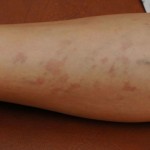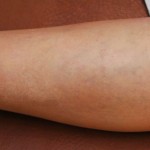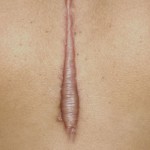
 Skin Camouflage
Skin Camouflage
Specialist skin camouflage can be applied to a number of various conditions such as stretch marks, vitiligo, birth marks and rosacea to conceal colour differences.
With tuition, these products, available on prescription, will give a natural finish and are waterproof unlike commercially available products.
Laser
Lasers may be used to successfully treat both the colour and the depth of the scar.
A pulse dye laser is attracted to the blood vessels within the scar to improve the redness. For some acne scarring laser re-surfacing can improve the surface texture. This involves using a laser to remove the top layers of skin, which stimulates collagen production in the deeper layers.
It is extremely important that you choose a suitably qualified practitioner if you are considering laser treatments to prevent damage to the skin.
 Hypertrophic
Hypertrophic
Raised, rope-like, highly coloured scars which stay within the boundaries of the original wound. May respond to pressure, steroid injections and laser.
Keloid
Raised, lumpy, often itchy scars which extend the boundaries of the original injury and may carry on growing indefinitely. This type of scar can again be as a result of surgery or injury but is often seen following body piercing.
May respond to intra-lesional excision, pressure and steroid injections.
Atrophic
Often with a pitted appearance, most commonly seen following acne or chicken pox. May respond to CO2 laser resurfacing
 Striae (Stretchmarks)
Striae (Stretchmarks)
Caused when the original skin has been stretched over a short period of time for example during rapid weight gain or pregnancy.
Treatments
Scarring can cause anxiety and distress. Prosthetic Innovations have a number of years experience in scar management and can offer various treatments to alleviate symptoms, flatten and improve the general appearance of many types of scarring.
Please contact us for a consultation.
Finance
Patients may be able to obtain funding for prosthetics and other treatments through their local Clinical Commissioning Group this can be guided by their general practitioner.
We also cater for patients who are either self – funding or for those patients holding health insurance, we have provider status through all the main health insurance companies.
